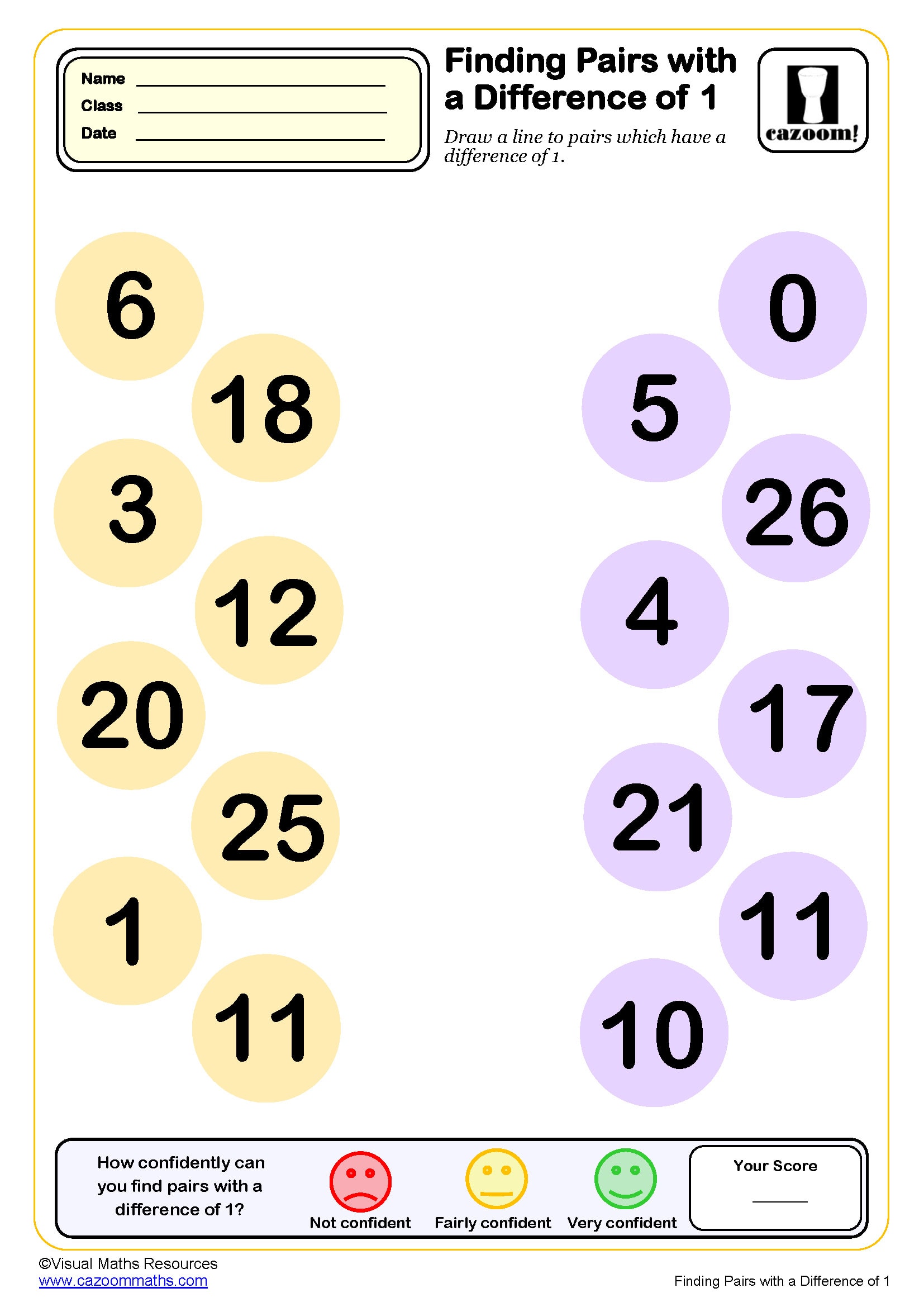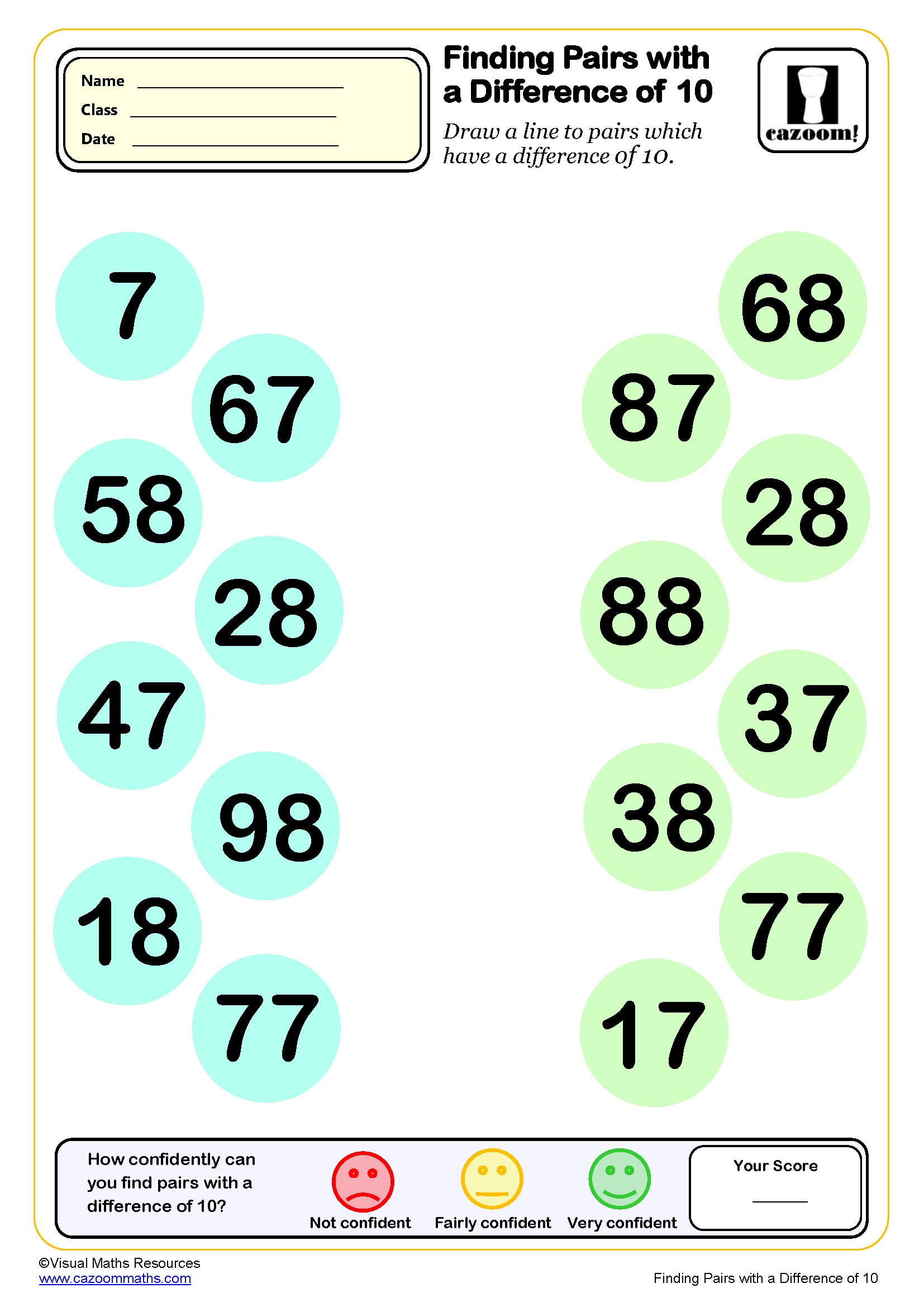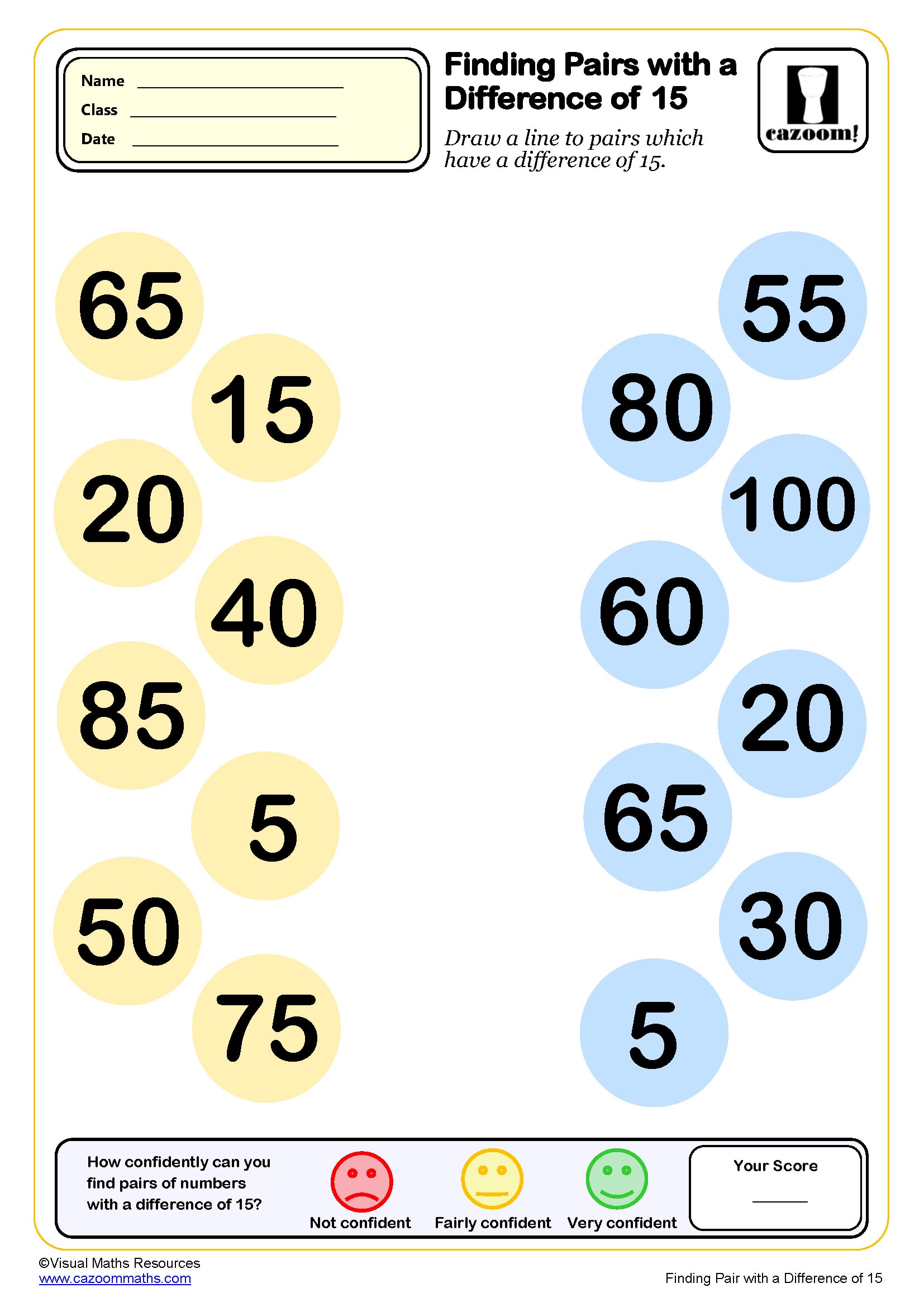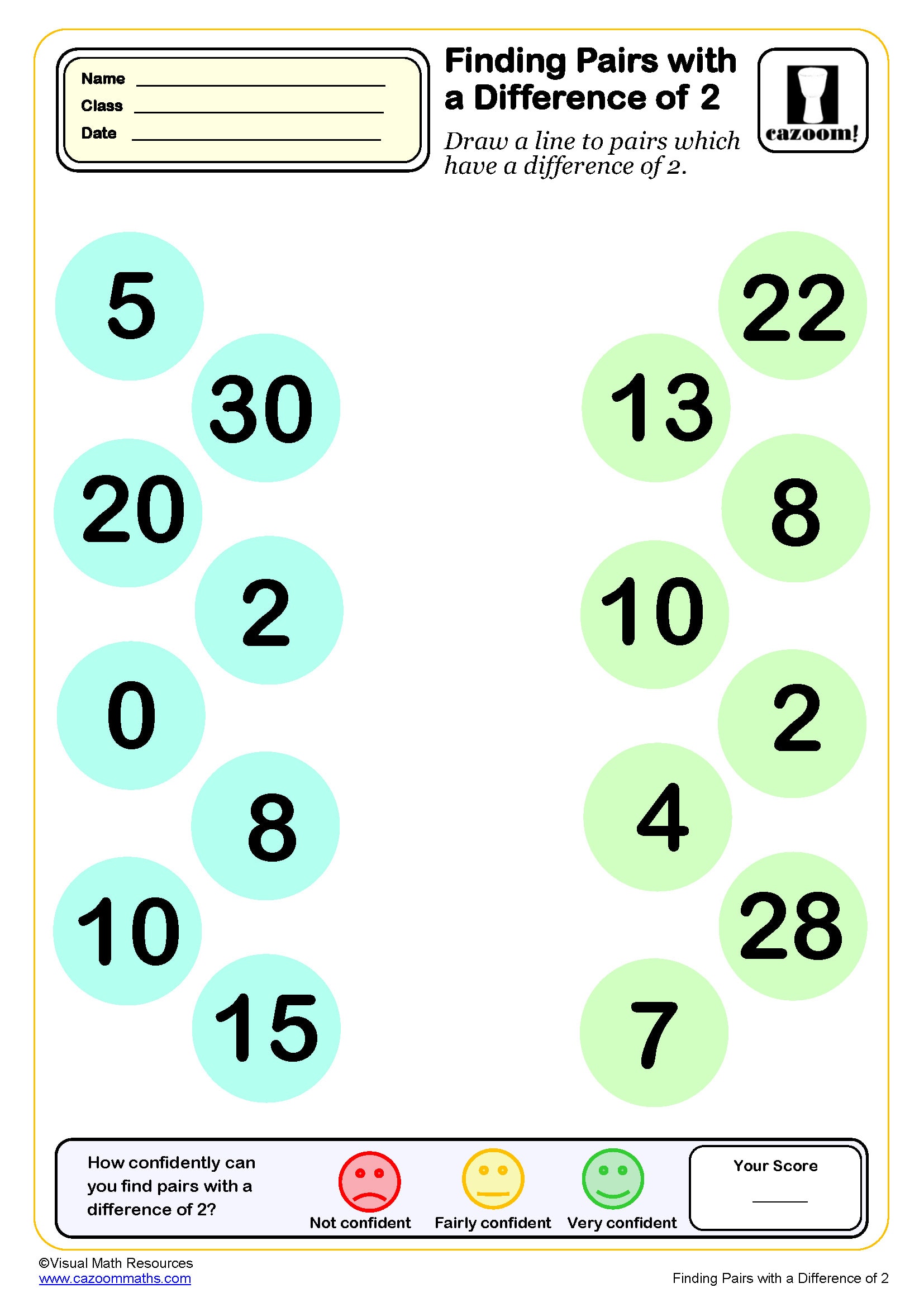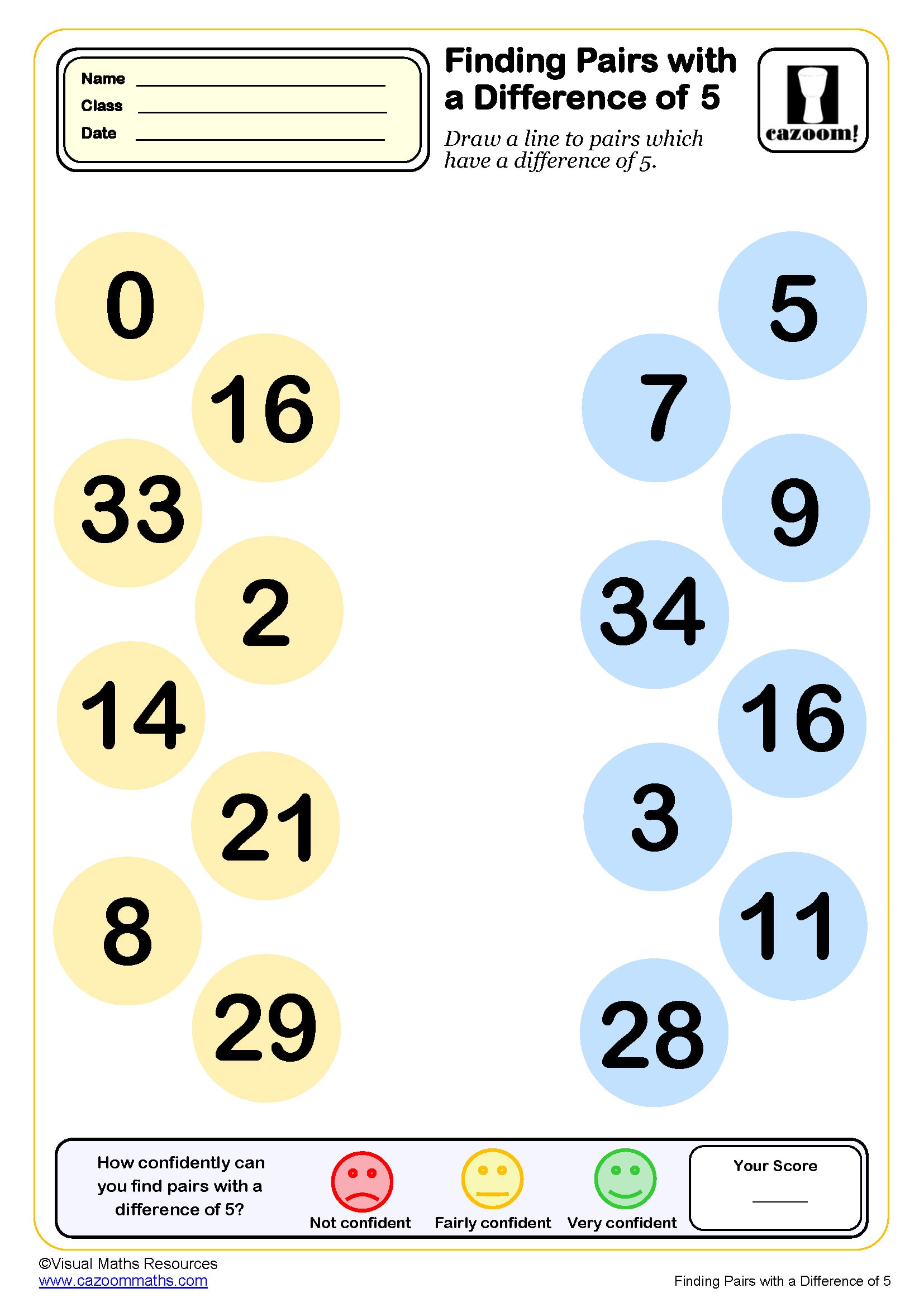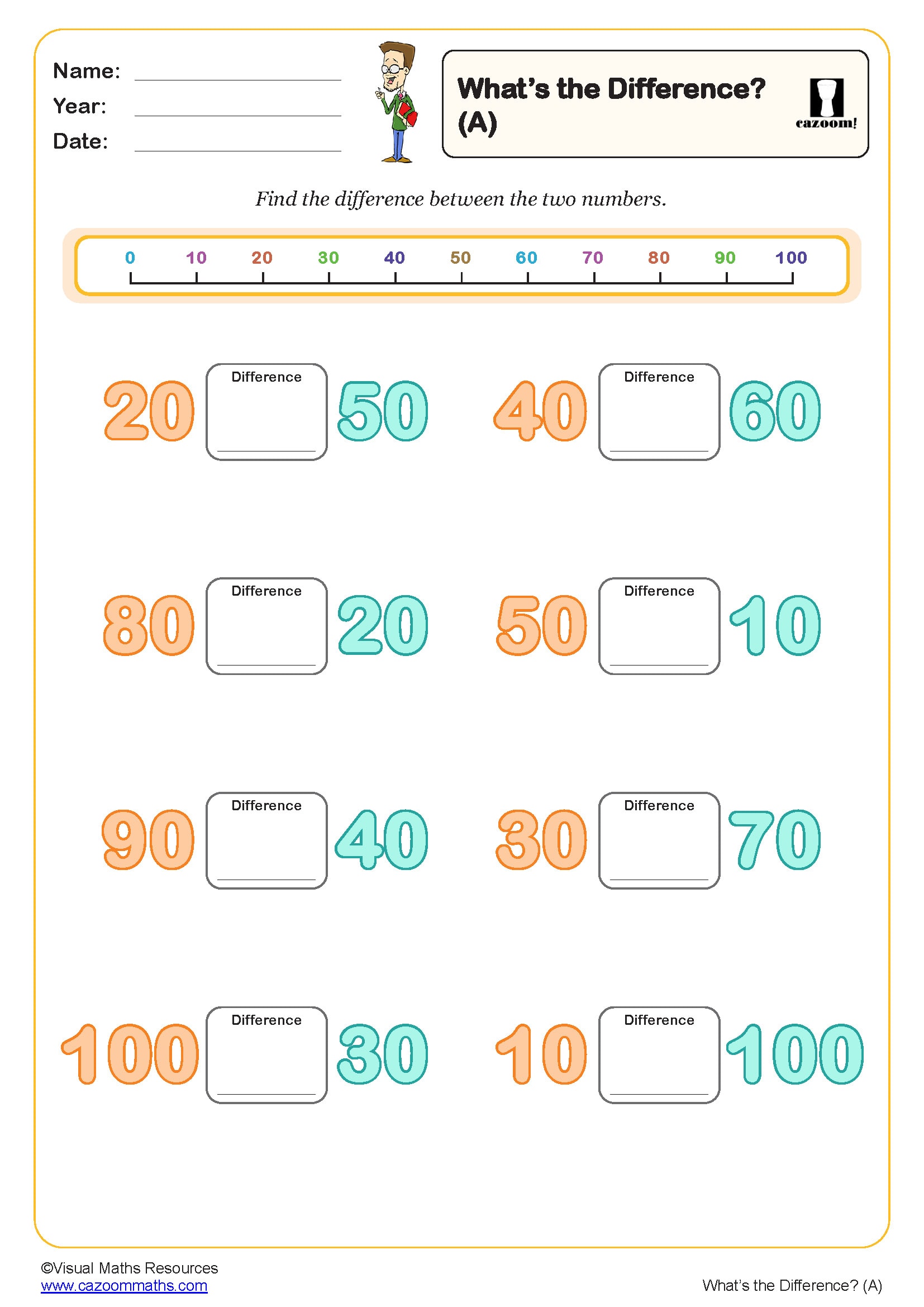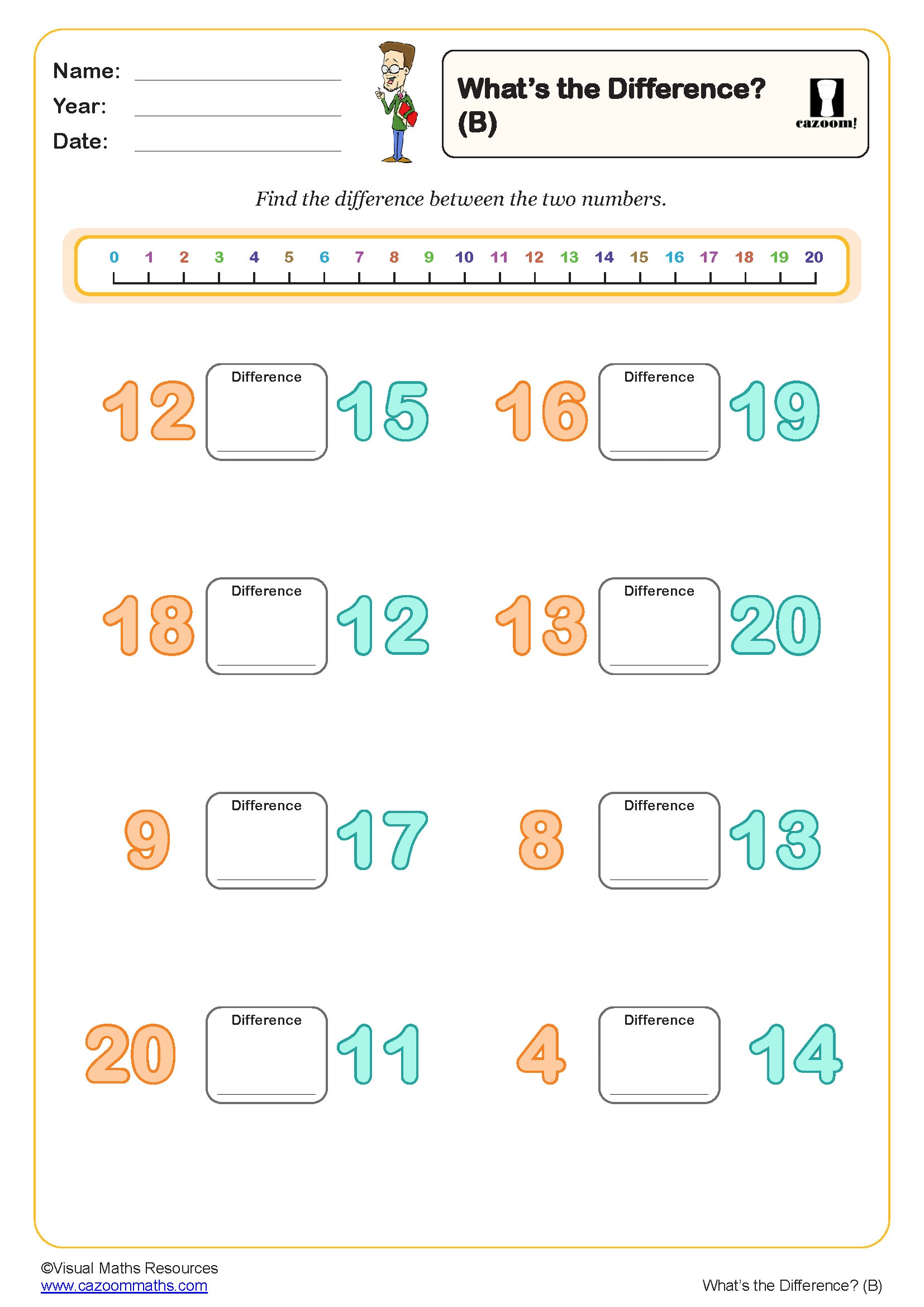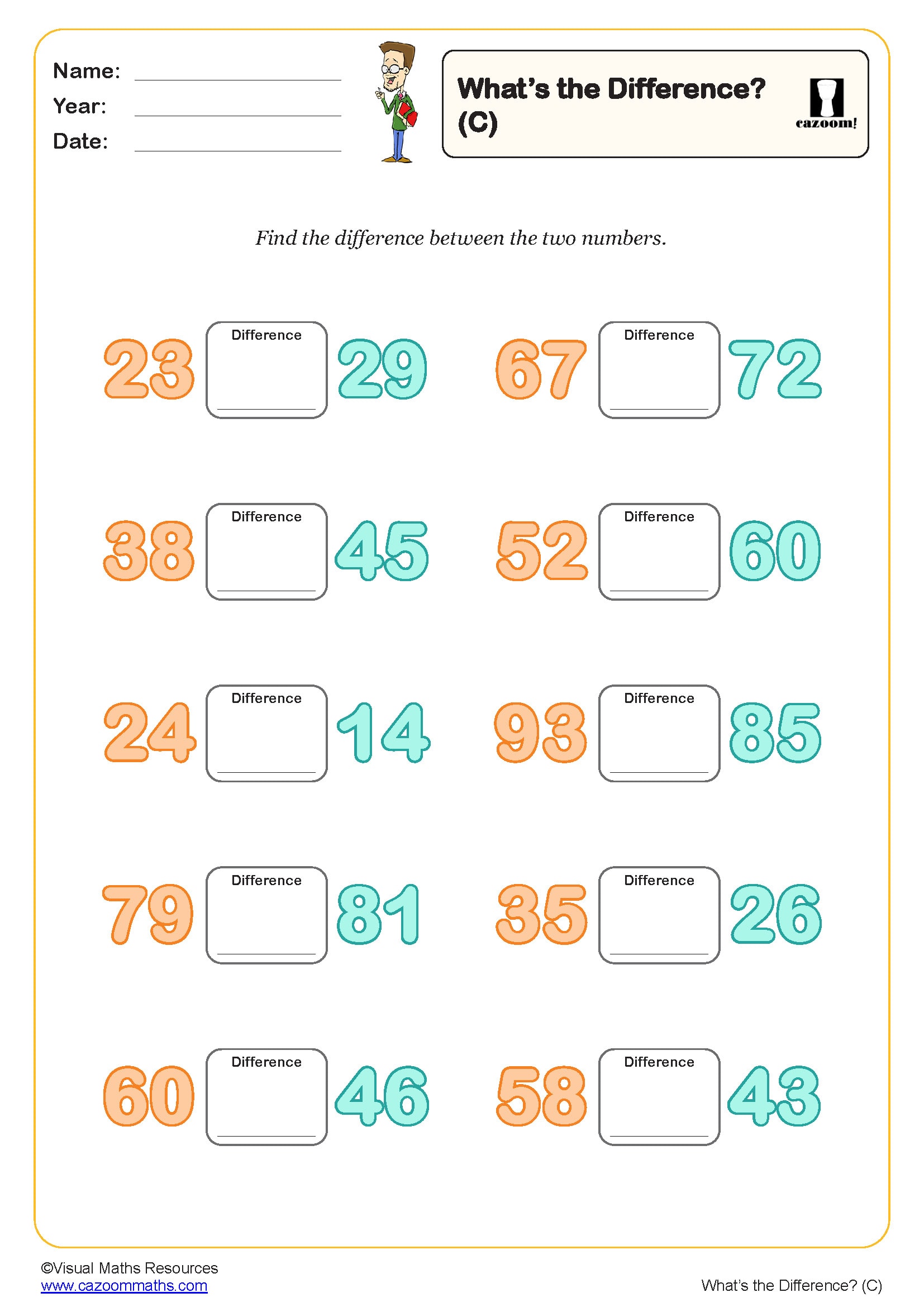Year 2 Working with the Difference Worksheets
Year 2 Finding the Difference Worksheets with Detailed Answer Sheets
These KS1 finding the difference worksheets tackle that problem head-on, offering carefully structured activities that progress from simple visual differences to more complex numerical reasoning. Each worksheet includes detailed solutions that show the thinking process, making them perfect for supporting both independent learning and guided practice sessions. All of our maths resources are created in ready-to-use, printable PDF formats and include separate answer sheets to initiate an easy checking process.
What Skills Do These Year 2 Differentiated Finding the Difference Activities Cover?
The basic concept of working with the difference in maths simply means finding the gap between two numbers or quantities – essentially subtraction in action, whether that's comparing heights, ages, scores, or any other measurable things. When we make it differentiated, we're giving different children different levels of challenge, so while some might work with simple single-digit differences using pictures, others tackle more complex two-digit problems or word-based scenarios.
With our academic resources, your students progress from basic counting differences using visual aids to more sophisticated problem-solving with numbers. The multi-step challenges help develop logical thinking while building confidence. They'll master comparing quantities, finding missing numbers, and understanding the relationship between addition and subtraction in real contexts.
How Finding the Difference Practice Supports Year 2 Mathematical Development
Your primary school students who get consistent practice with finding differences become much more confident with mental maths overall. These skills directly feed into their understanding of number bonds and early algebra concepts. Regular practice with differentiated activities ensures every child can access the learning at their level while building towards KS1 SATs requirements.
• Builds essential mental maths strategies for quick calculations
• Develops logical reasoning skills needed for problem-solving across subjects
• Strengthens understanding of number relationships and patterns
• Provides perfect preparation for more complex subtraction concepts
• Boosts confidence with word problems and real-world maths scenarios
Real-World Applications Where Year 2 Students Use Finding the Difference Skills
These skills connect beautifully with science (comparing measurements), geography (population differences), and even art (pattern recognition). It's actually quite satisfying when students start spotting differences in playground games, sports scores, and pocket money calculations without even realising they're doing maths.
• Comparing prices when shopping with family members
• Working out score differences in sports and playground games
• Measuring and comparing heights, lengths, and weights in science
• Calculating time differences between events and activities
• Understanding temperature changes and weather patterns
• Solving puzzles and brain teasers that require logical thinking
